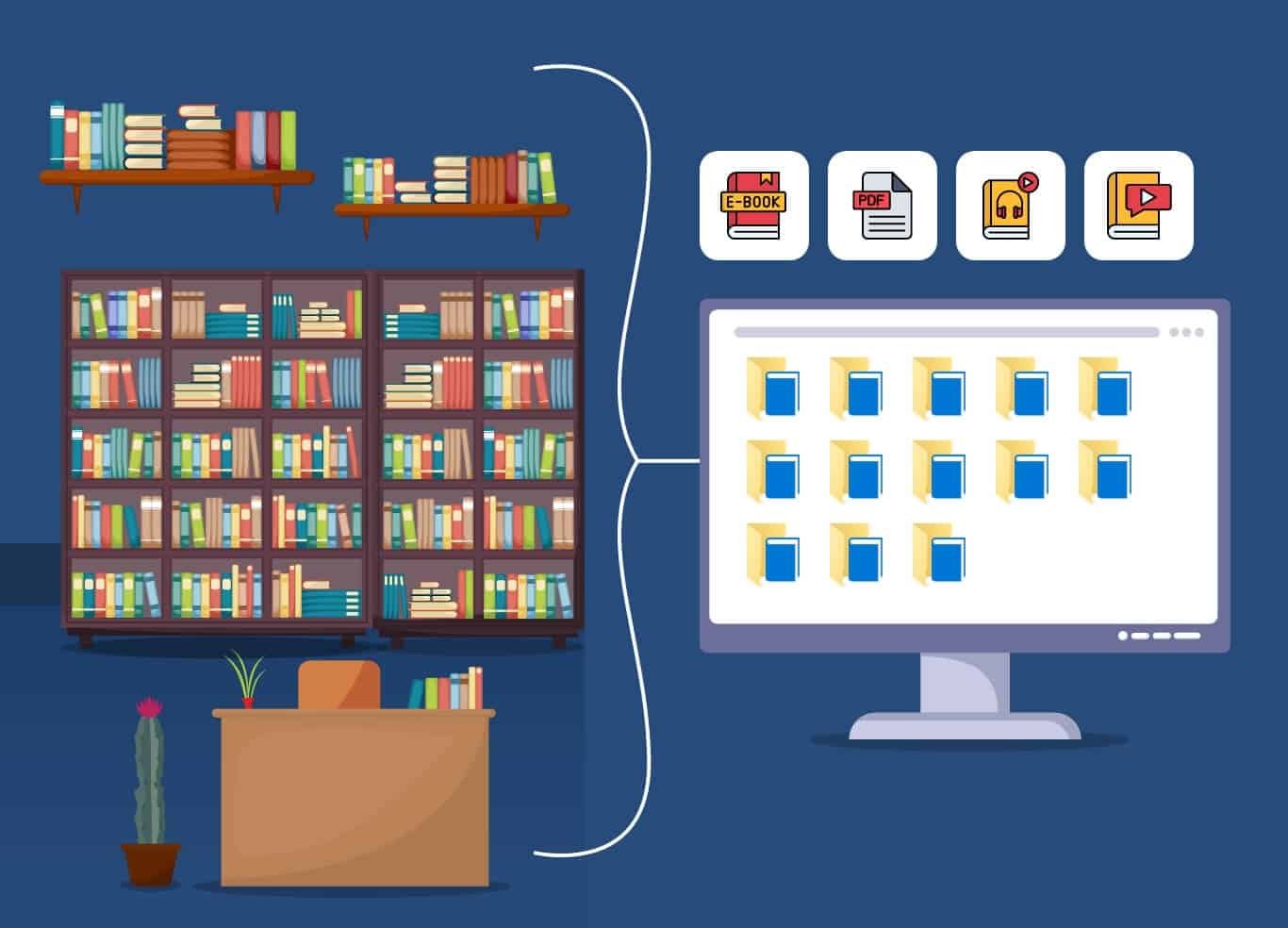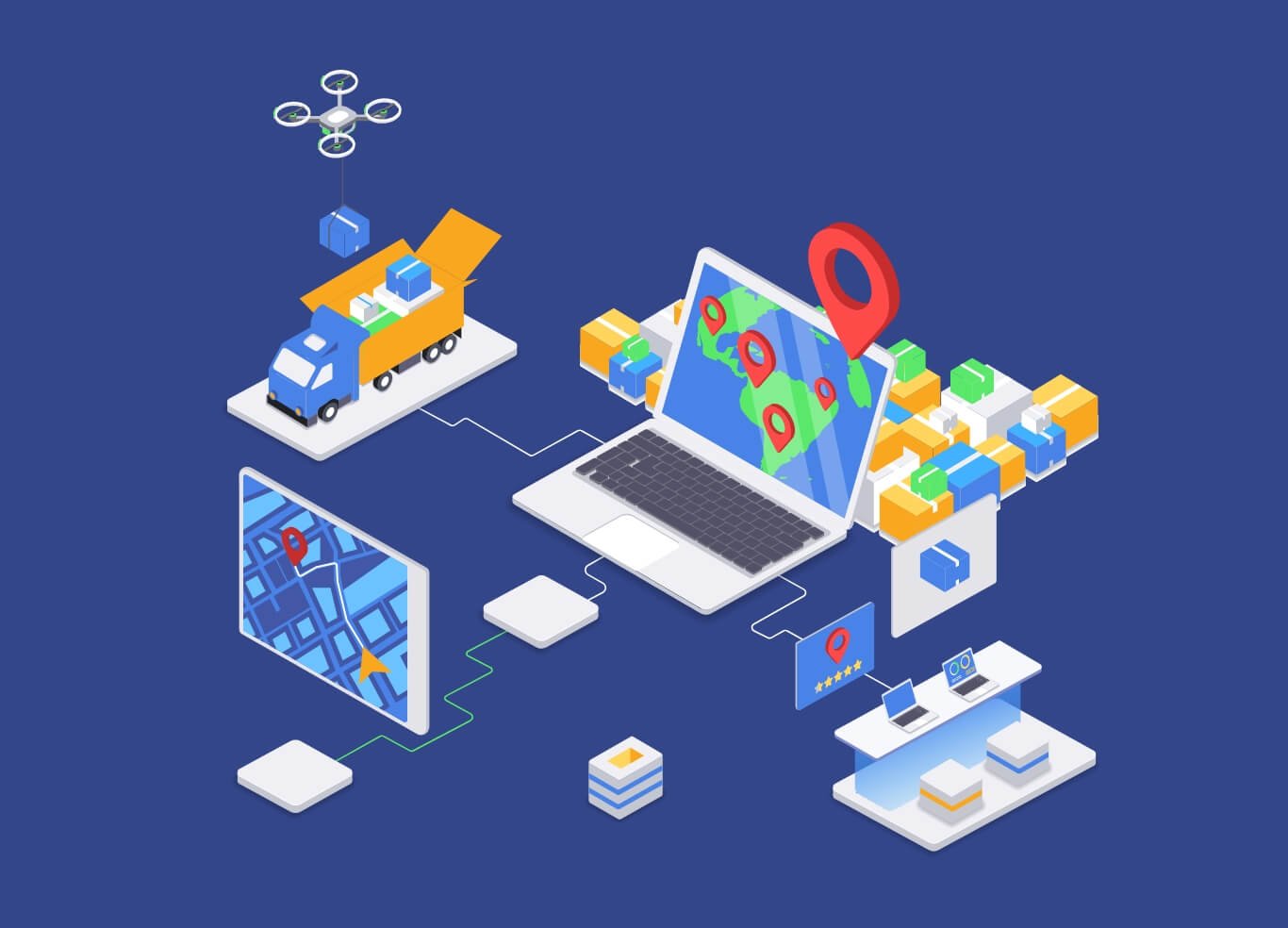From early civilization, books have been a crucial part of everyone’s life. Documenting historic moments, preserving life’s achievements, discoveries in different fields, theorems, stories, and more. All these are enclosed in books that we read today. Magazines, novels, manuscripts, guides, and study material have always been around us.
From reading a bedtime story to a child to referring to a book for proving a theory, books are everywhere. Fiction, autobiographies, study materials, various genres, novels, and books have been around us for generations. All these books are stored in libraries, bookstores, and other facilities where a massive amount of books, documents, novels, journals, and manuscripts are kept.
Grabbing a book from the library that helps solve critical physics problems or provides hands-on historical content is an overwhelming and mesmerizing experience. But have you ever wondered how libraries can efficiently store so many books of different segments all at once? Or is there any other storing system that allows librarians to keep old, valuable, first editions of context safe?
There might be more than one answer to it; however, one of the beneficial and efficient solutions is book digitization for libraries. In the modernized and digital landscape where everything is available one click away and visible through different screens, book digitization is a simple yet effective solution. The growing era of digitalization has led many businesses to adopt the approach as it offers streamlined solutions, easy management, quick access and transfer, and more. Therefore, book digitization is an impactful approach for libraries and archiving important documents.
Not only this, but scanning and digitizing books, novels, manuscripts, and other records is a comprehensive way to preserve, share, and access the content digitally. Moreover, librarians don’t have to go through the trouble of maintaining old papers due to environmental factors. The process of data digitization enables cost savings, creates significant space, and saves crucial time in finding the right information. Due to its various benefits, digitization has become an increasingly key approach to safeguarding crucial data and ensuring easy access.
For libraries and archives collectors, the digitization of books, historic monuments, study materials, and other records can safely be preserved in digital format without concern about paper damage. In fact, library digitization solutions extend the lifespan of important context, information, or historical materials that need to be safeguarded. Here’s a detailed insight into how book digitization services are critical for libraries and their benefits in today’s digital landscape.
Reach to Wider Audience with Book Digitization for Library
Significance of Book Digitization Solutions
Imagine your child wants to learn about the historic moments in India’s history. One of the fastest, most effective, and most accessible ways is to research on the internet. Content available online doesn’t magically appear; it is uploaded to multiple online platforms, making it easily accessible. Books on India, manuscripts, novels, newspaper clips and more have been digitally present that are easily accessible. This is where digitization is essential in today’s era.
Elaborating on this thought, book digitization services come into play initially. Novels, documents, and other content materials in traditional or manual formats were slowly becoming prone to high risk, such as paper damage due to sunlight, loss of information or misplacement, damage to books or documents through natural calamities, and many more.
This is why the library adopted a data digitizing approach to preserve old books and content materials that reflect culture, provide precise information about previous events, contain study materials with crucial findings, and more. In simple terms, book scanning services or digitization is a process of creating an online or digital version of physical books, content materials, documents, newspaper archives, records, manuscripts, and other similar materials.
Usually, the objective of digitizing books and other materials for libraries is to protect the historical records, create accessible and searchable versions of content, or organize the personal library for sharing. Today, as the modern landscape is performing with digital factors only, countless books, historic events, and manuscripts are in digital format, yet a lot many only exist in print format.
Since the internet is a large pool of information, many details and data are not yet available. This is why digitizing books from a library or creating digital library archives is beneficial in today’s landscape, allowing libraries to keep pace with the market. As a matter of fact, scanning or digitizing old books helps to bridge the gap that will enable professionals to preserve the rare content, and the work remains accessible, searchable, and shareable without any concerns of damage. Not only this, but there are many reasons for library digital transformation, which can be explored in detail.
Key Reasons for Book Digitization for Libraries
As briefly discussed, the digitization of books for libraries has various reasons to implement a data digitization approach. Historic records, manuscripts, first-edition books, and other documents are best stored as paper is easily damaged. Primarily, the goal of book scanning is to preserve content and make it easily accessible. This does not mean conservators or archivists will stop preserving the print format.
This process of preservation continues regardless of any concern for future damage or loss of information. With a digital file format available, it can be helpful in getting the original details without being misled. Whether for education, research, or personal enjoyment, the digitization of books and documents plays a crucial role for several reasons, yielding beneficial outcomes and underscoring its importance in today’s landscape. The following are the key reasons;
Book Digitization Reasons to Implement
Preservation of content
Space efficiency
Simultaneous use
Enhanced accessibility
Quick search ability
Reaching a wide audience
Content security
These are the primary reasons why book digitization plays a vital role for libraries. As a matter of fact, a library is a place where a variety of books from any category are available. However, for people living far away, unreachable, or inaccessible, it is impossible to have hands-on access to the content as per the requirement. If physical books and historical documents are digitized, it becomes easier for the audience to access the content for different purposes. Scanning books and document digitization are usually categorized into two primary methods. Let’s briefly discover.
Types of Book Scanning Services
Book digitization or scanning is crucial for libraries to enhance the accessibility of their content. Digital transformation or digital archiving for libraries is one of the comprehensive solutions that enables widening access, storing, and preserving historical files for future generations to learn, understand, and appreciate. In comparison, the process of transformation isn’t a simple approach, as it involves various types. The process is primarily categorized into two methods, which are common and have their own advantages and challenges. Here are two methods;
- Destructive scanning: Destructive scanning is a process that involves disassembling a book to facilitate a more straightforward scanning process. It consists of removing the binding, cutting the spine to separate the pages, and additional steps. Loose pages of the book are sent through an automatic document feeder where every single page is separately scanned and even organized digitally according to the digital book. Typically, this is a faster and cost-effective process, with no concerns about damaging the book. As a matter of fact, it is a better choice for large-scale projects involving heavy and lengthy books.
- Non-destructive scanning: The non-destructive scanning process utilizes specialized scanners, such as cradle scanners, to aid in digitization. Non-destructive methods preserve the book’s integrity and enable the capture of high-quality images of each page without disturbing the binding or spine. As a matter of fact, specialized scanners support the book shape and design as well, ensuring the original physical copy remains unharmed. However, scanned pages of a book are further manually organized according to the sequence for mirroring the digital version of the physical book. Usually, the digitization of historical manuscripts or documents is preferable, as the original copy is important too. As compared, non destructive methods are usually slower, require advanced equipment and expert knowledge as well.
These are the primary methods commonly used in the digitization of library resources. In fact, each method is beneficial and has its own set of challenges, depending on the volume, type of content, and nature of the book (whether it is fragile or sturdy). Considering the above two methods, the choice depends on the kind of document or book being digitized. However, there are various types of library resources that are commonly digitized in today’s era to make them accessible and shareable. Discover library resources for data digitization.
Types of Library Resources Digitization
Library digitization solutions have enhanced how archivists and librarians manage a large volume of books and records that require extra care and attention. As a matter of fact, digitizing library resources is a key strategy in the digital realm to enhance accessibility, preserve historic manuscripts, and keep up with demand for digital content. As a matter of fact, it is a significant way to broaden access to information and reach a wider audience. The following are the primary types of library digital transformation.
Various Types of Library Resource to Digitize
Books and Texts
Manuscripts and Historic Collections
Maps and cartographic materials
Journals and Academic Articles
Audio visual materials
Theses and Dissertations
Archival Records and Special Collections
The digitization of library resources has a significant impact on how materials are accessed, preserved, shared, and stored. The types mentioned above are common resources for data digitization in libraries; however, additional options may be available, depending on the specific location and type of library, such as city libraries, university libraries, government libraries, and others.
Since book digitization has become a prevalent approach, it requires proficiency in technology, expertise in processes, the ability to manage and scan fragile materials carefully, and more. As libraries lack resources and cannot afford to hire archivists, outsourcing book scanning services to a reliable firm is a holistic approach. Explore further how outsourcing is a beneficial strategy.
Outsourcing Book Digitization for Libraries
In the digital landscape, where the digital approach is rapidly gaining traction, it has also become an essential strategy, particularly for libraries to preserve their resources. From enhancing accessibility to storing fragile materials in the utmost secure way, book digitization services are a game-changer.
However, the process of converting physical data into a digital format is fraught with challenges, as libraries often lack the necessary resources, equipment, software, and expertise. This process requires utmost attention, accuracy, and efficiency for a successful transformation. As a matter of fact, there is a high cost of digitization which is insignificant for libraries to bear.
Therefore, outsourcing book scanning or digitization services is a key solution, as outsourcing is a cost-effective approach. Additionally, partnering with third-party service providers helps to stay focused, minimize cost, and have hands-on, accurate digitized data.
Uniquesdata is a renowned data digitization company with extensive experience, a professional team, and a pricing model tailored to requirements. As a matter of fact, Uniquesdata has access to the latest technology that is suited for all materials and brings quick and easy digital transformation solutions. The following are the benefits of partnering with Uniquesdata;
- Cost efficiency
- Timely project delivery
- Tailored solutions
- Free trial
- Transparent pricing
- Dedicated resource
- Technological expertise
Ending Thoughts
Book digitization services have become an effective strategy for libraries to store, manage, and enhance the accessibility of material. Digitization enables the digital preservation of fragile materials, historic notes, and other crucial content, improving information sharing and reaching a larger audience.



